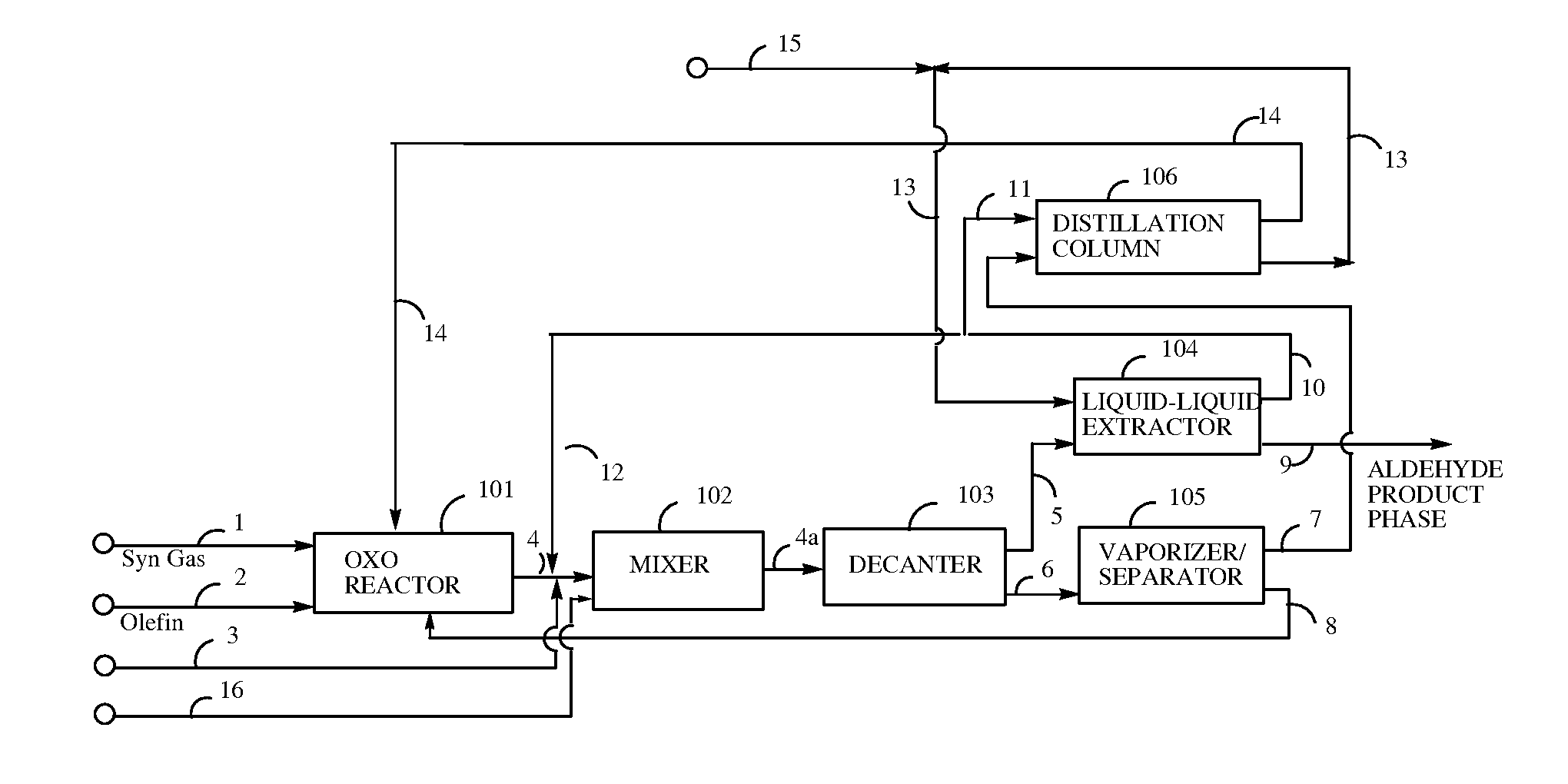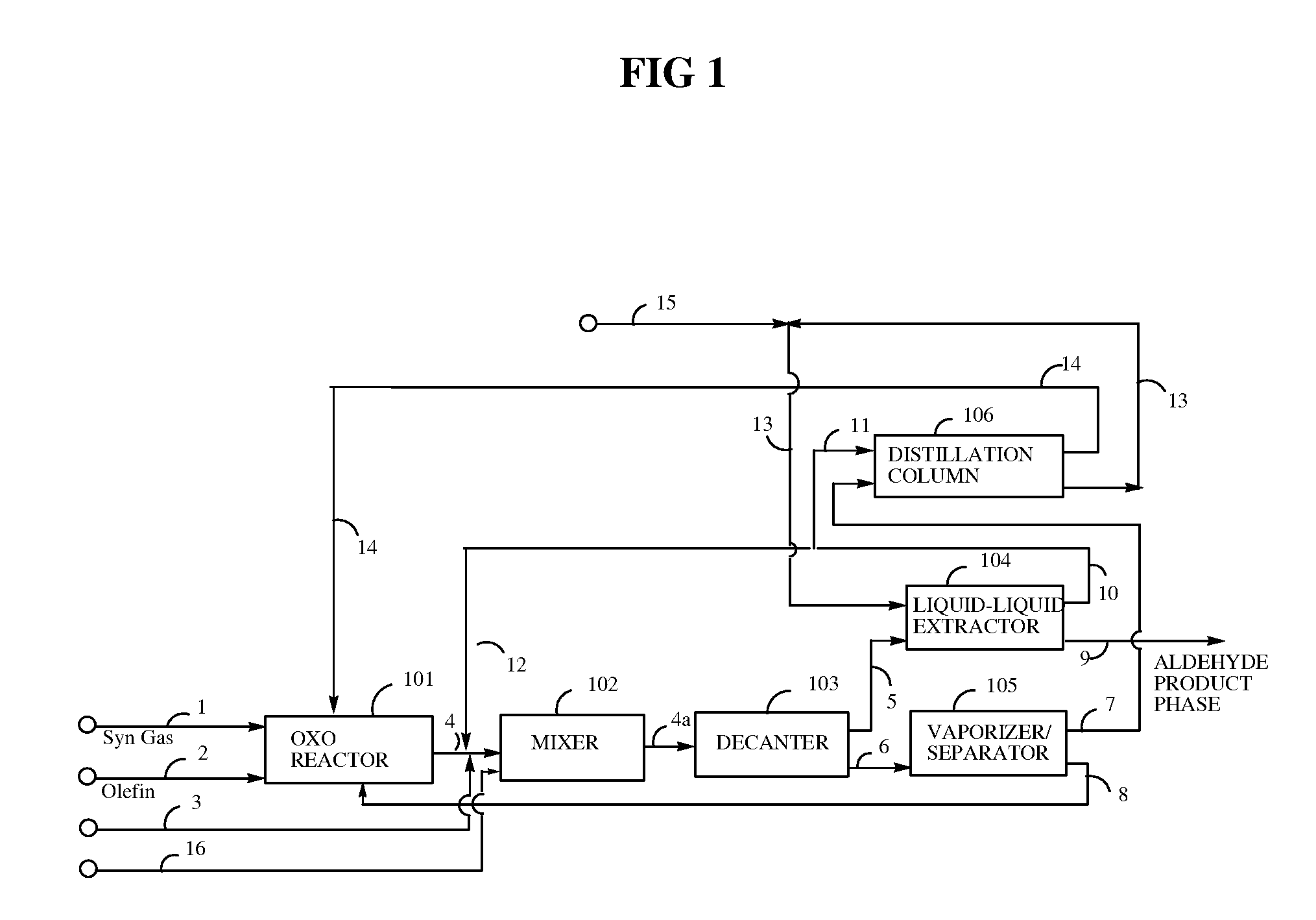Extraction process for aldehyde product separation and catalyst recovery
- Summary
- Abstract
- Description
- Claims
- Application Information
AI Technical Summary
Benefits of technology
Problems solved by technology
Method used
Image
Examples
example 1
[0085]A hydroformylation reactor (Parr pressure reactor, 300 cc) is configured with a dip tube to feed syngas (CO+H2) to the bottom of the reactor, and further equipped with internal coils for controlled water cooling, and with addition cylinders for addition of substrate or water into the reactor under pressure. The reactor is also equipped with a high pressure cylinder (600 cm3, 6000 psia / 41.4 MPa) for pressurization with syngas or any other gas to be fed into the reactor. Pressure drop data from this cylinder are used to calculate olefin conversion and reaction rates of the hydroformylation process.
[0086]The reactor is cleaned and dried by purging nitrogen. The stock catalyst solution (60.0 ml), prepared as described hereinabove, is transferred into the reactor under nitrogen, followed by addition of degassed high oleic canola oil (130.0 g; >70 percent oleic content). The reactor is purged three times with syngas (H2:CO=1 / 1) and then pressurized to 390 psia (2689 kPa) (target pre...
example 2
[0088]Referring to Example 1 following the hydroformylation step, the 50 volume percent of the hydroformylation product composition remaining in the hydroformylation reactor is treated in the following manner. The stiffing rate is reduced to 600 rpm; the temperature is lowered to 75° C.; and 100 psia (689 kPa) syngas pressure in the reactor is slowly vented. Degassed deionized water (25 ml) is transferred into the substrate addition cylinder under nitrogen. The cylinder is purged with syngas three times and then pressurized to the target pressure (400 psia / 2758 kPa). Water in the substrate cylinder is pressurized into the reactor; the temperature is lowered to 65° C.; and stiffing is continued at 600 rpm for 15 min. The resulting mixture is drained into a bottle containing methyl propyl ketone (50 ml) and 1-octene (40 ml) which is preheated to 65° C. The bottle is placed in a 65° C. bath and stirred for 5 to 15 minutes to settle out two phases. The bottom phase (crude aqueous phase)...
example 3
[0089]The procedure of Example 1 is repeated, with the exception that heptane replaces 1-octene as the nonpolar hydrocarbon solvent. Results are shown in Table 2.
PUM
| Property | Measurement | Unit |
|---|---|---|
| Temperature | aaaaa | aaaaa |
| Temperature | aaaaa | aaaaa |
| Fraction | aaaaa | aaaaa |
Abstract
Description
Claims
Application Information
 Login to view more
Login to view more - R&D Engineer
- R&D Manager
- IP Professional
- Industry Leading Data Capabilities
- Powerful AI technology
- Patent DNA Extraction
Browse by: Latest US Patents, China's latest patents, Technical Efficacy Thesaurus, Application Domain, Technology Topic.
© 2024 PatSnap. All rights reserved.Legal|Privacy policy|Modern Slavery Act Transparency Statement|Sitemap



